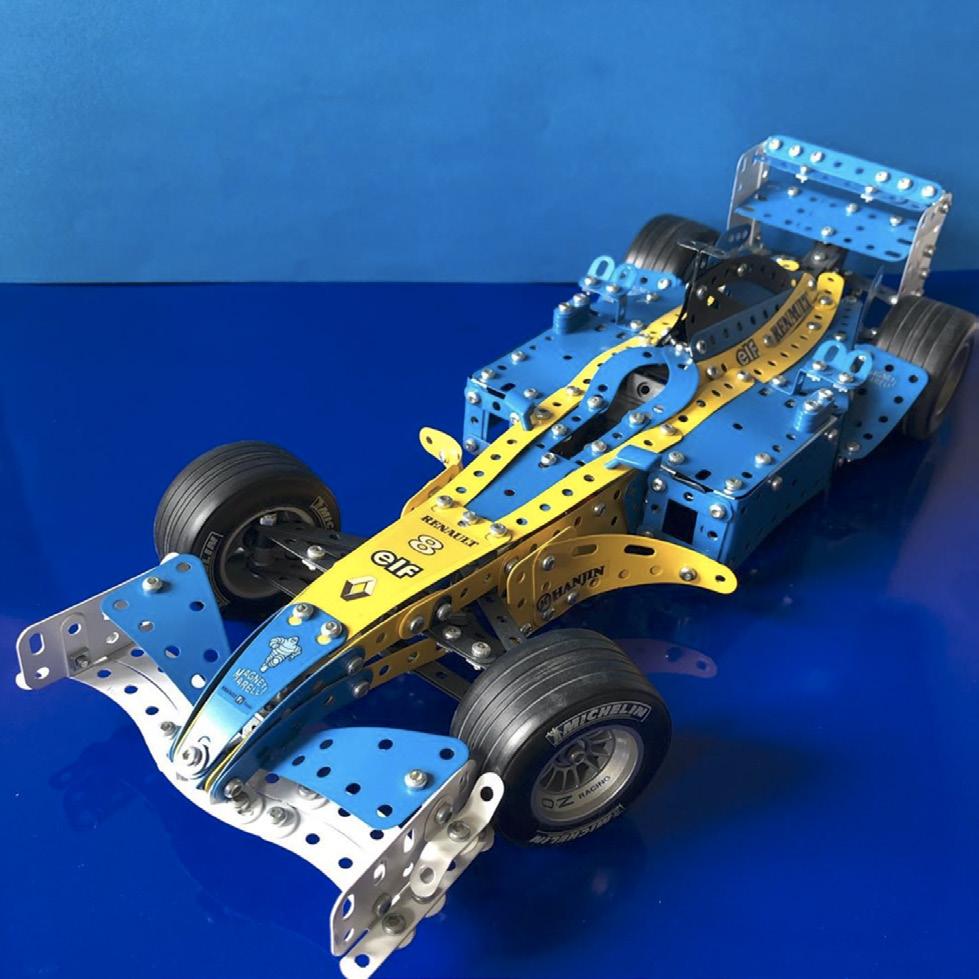
3 minute read
Meccano Man
Thierry Monnier
"When I was a little boy there were no smartphones or computers and the internet wasn't even a distant dream. Indeed, television had only just arrived. My older brother already had small cars, soldiers, a fortress and all the other toys that fascinated boys back then ..and of course boxes of Meccano. And that is how I learned to build bridges, cranes, trucks, cars and so on.
Advertisement
At that time we didn't have a lot of money and boxes of Meccano were expensive so it was more than a little frustrating. But you could still build something, play with it and then take it apart to recreate yet something else. This could could go on forever!
I then completely forgot about Meccano for many years until one day I found a beautiful old box in a flea market, and then a second one and then another. In this way, I started a new collection many years after the first. I cleaned all the parts and started to renovate them, to put them back in order. Then of course I started to make things and I have never stopped."
Ig: @titi_meccano




In 1901 Frank Hornby (1863-1936), a clerk from Liverpool, invented and patented a new toy called ‘Mechanics Made Easy’. Hornby, who had a keen interest in architecture, had originally invented the toy for his two sons, as a way of introducing them to the basics of engineering.

‘Mechanics Made Easy’ was a model construction kit, consisting of perforated metal strips and plates with nuts and bolts to connect the pieces. The only tools needed for the sets were a screwdriver and a spanner. Rods, wheels, pulleys and gears were added later to the sets. In 1901, Hornby applied for a patent for ‘Mechanics Made Easy’ and the construction toy went into production. Early sets were packaged in tin boxes and the parts were produced in unpainted metal. In 1907, Hornby registered the Meccano trademark, and in 1908, formed Meccano Ltd. To keep pace with demand, a new Meccano factory was built in Binns Road, Liverpool in 1914. This became Meccano Ltd’s headquarters for the next 60 years. Over the next 25 years, various numbered sets were introduced and by the mid-1930s, ten full sets were available as well as several accessory sets. To mark the twenty-fifth anniversary of the company, colour was introduced and in 1926, red and green sets were produced. From 1934, blue and gold sets were also available in Britain. From the early 1960s the Meccano company was in financial trouble, unable to operate independently and was subject to various takeovers from manufacturers such as Tri-ang and Airfix. During this time the colour combinations changed again, first to yellow and black, then to yellow and blue. Plastic Meccano sets were also produced for younger children. In the 1980s Meccano was manufactured in France and in 2000 it was taken over by the Japanese firm, Nikko. Today, Meccano continues to be made in France and China.

The success and popularity of Meccano has been, and continues to be, phenomenal. In order to cater to its huge popularity, Frank Hornby started a Meccano magazine in 1916, which later became a general hobby magazine that continued to be published until 1981. In 1919 Hornby founded the Meccano Guild to bring together the various Meccano clubs that had sprung up all over the world. This tradition is continued today by the International Society of Meccanomen.









